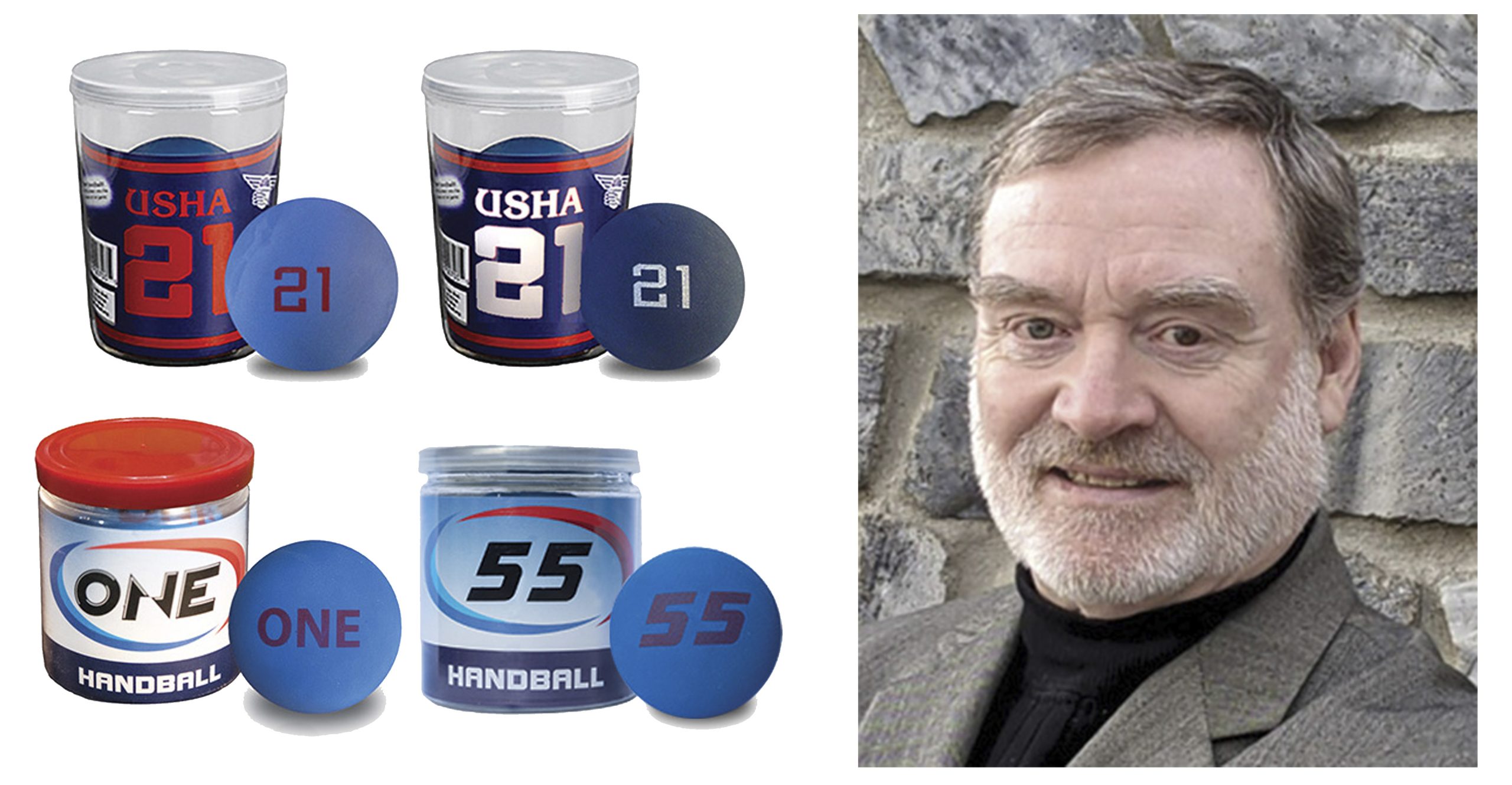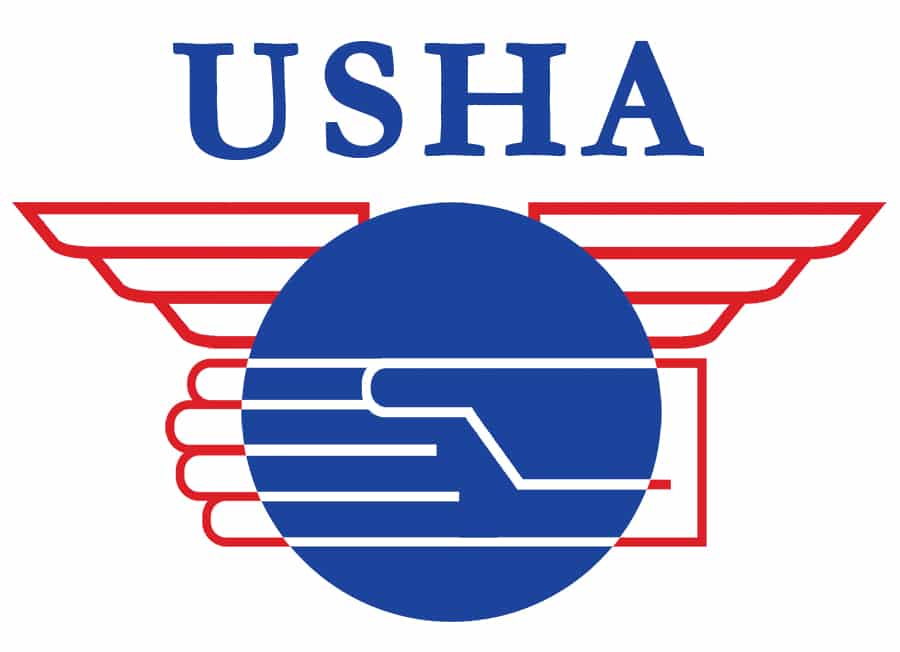The Ball: A Message from USHA President Denis Hogan.

Dear Handball Players,
The USHA believes there is a need for communication with the membership on a greater frequency on topics of interest to the membership. This is the first in a continuing series to engage the members on issues of interest or concern.
On this occasion, we turn to the topic of The Ball. There is not a one of us indifferent to the quality, quantity, and costs of The Ball. To explain where we are, we must go back to where we were.
Since the summer of 2011, we have been using the “21” ball which is manufactured in Ireland. A consistent and durable ball remains the goal; however , quality had noticeably declined, resulting in a considerable number returned to USHA right out of the cans. There were a number of factors, but one specific variable was the method of producing the pressure in the ball. After the two halves of the ball were formed, a small wafer of temperature-sensitive material was put into the two halves and sealed together. The ball was heated to a temperature that caused the wafer to turn to gas, producing the pressure inside the ball. The inconsistency came from the specification for the wafer, which was 1 gram plus or minus 0.1 gram. This allowed a variation of approximately 20%, from 0.9 g to 1.1 g of wafer.
A growing contingent of players wanted to research a solution with the intent to produce a consistent product. As a result, a second company in Cincinnati began research and development for an alternative ball. During initial development, there were issues of more bounce than was desired and a thin coating on the surface from the manufacturing process that induced undesirable bounce from the sidewall and backwall corners. Further refinement in cooperation with the production company in Taiwan removed those characteristics, and the ONE ball was approved as a USHA ball. Differentiating the two balls, the One ball uses a pressure chamber to capture an exact ambient pressure when sealing the two halves of the ball, thereby eliminating pressure variations.
As time went on, with two competing manufacturers, each company pushed each other to resolve issues, thereby improving the quality and playability of both their respective products. This has given us two balls with two suppliers from two separate manufacturing sites. The endgame is to have multiple ball suppliers and to let the market decide which one the players ultimately prefer.
Beyond that, the USHA has long sought to have a ball that is more player friendly to those whose hands find the impact of the “21” Ball and the “One” too much for their hands, elbows and shoulders. A harder ball also makes it hard to get new players to enter and continue the sport. At the specific request of the USHA Board, the Cincinnati group undertook to develop a more user-friendly handball, a lighter ball with slightly less pressure. Players who tested samples and prototypes preferred the user-friendly ball, and that project developed our latest introduction: the 55 ball, which is a reference to the nominal weight being 55 grams. The nominal weight of the other two balls is 61 grams. The result is a slightly lighter ball that hits your hand with less mass and lower pressure making it ideal for players whose hands are more sensitive to impact. Specifically, older or novice players who would have to stop playing due to pain find themselves able to continue to play The Perfect Game.
So, where do we stand today on which balls are authorized for USHA play?
All three balls, the “21” ball, the “One” ball, and the “55” ball, are authorized and approved for any and all local, state, and regional tournaments, at the selection of the respective Tournament Director.
Last year, the Women’s Commissioner, Kristen Hughes, at the request of the women playing in the Women’s Classic, requested that the upper division of that Tournament be allowed to use the Red 21 ball while keeping the White 21 for the beginner or novice skill divisions. The Red 21 and White 21 were requested based on player ability and experience, not gender. The USHA Board approved this change to follow what the membership wanted.
Until the advent of the “One” ball, the “21” ball was the only authorized and approved ball for all USHA National Tournaments. Three years ago, the One-Wall Small Ball community overwhelmingly urged and requested the USHA to sanction and approve the “One” ball for the USHA National One-Wall, Small Ball Tournament. With the concordance of the members of that specific community, the Board approved the “One” ball for that National Tournament, only. Again, The Board followed what the membership requested.
Currently, the Women’s Classic is authorized to use the “21” and the White “21” for their two divisions. The One-Wall Small Ball National is authorized to use the “ONE” ball. All other USHA National Tournaments are authorized to use the “21” ball.
There is expressed interest in some of the Three-Wall community to consider the ONE ball for the Toledo National Tournament. To be fair to our players, and to be fair to our suppliers, we have approved that each player at the 3-Wall Nationals in Toledo in 2023 will be gifted a “One” ball. Our intent in this endeavor is to introduce the most dedicated players of that discipline to the ONE ball en masse, to generate a common experience with this ball. With that, we believe handball players will let us know what they want.
The Board has no interest in driving the members to a position they do not want. We want you to have a choice and also want to deliver the best products to our players. We are here to serve you, and firmly believe you collectively are the best barometer for us to use in making decisions on the game. Your critiques and feedback are essential in Game Committee discussions and Board decisions on balls and equipment.
In the meantime, we have two suppliers giving us redundancy and a safety net guaranteeing a supply of balls from two distinct parts of the world with a choice of three balls to suit your personal preferences and physical abilities.
Local, state, and regional Tournament Directors have a choice of balls to meet the needs of their players. Do let us know the quality of the balls you use. Do let us know how your tournaments went with each choice. Let us know if and when we should consider approving more ball options for the National Tournaments.

